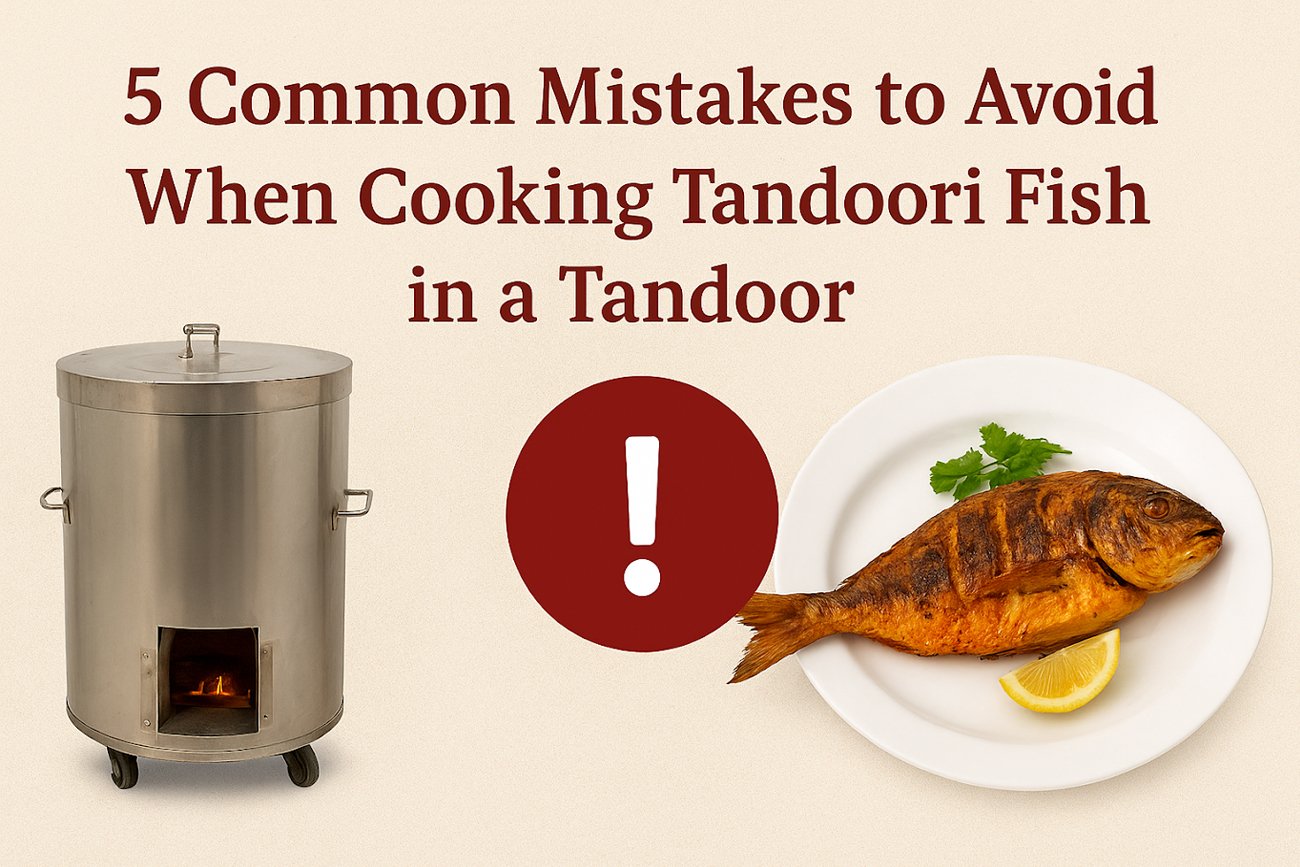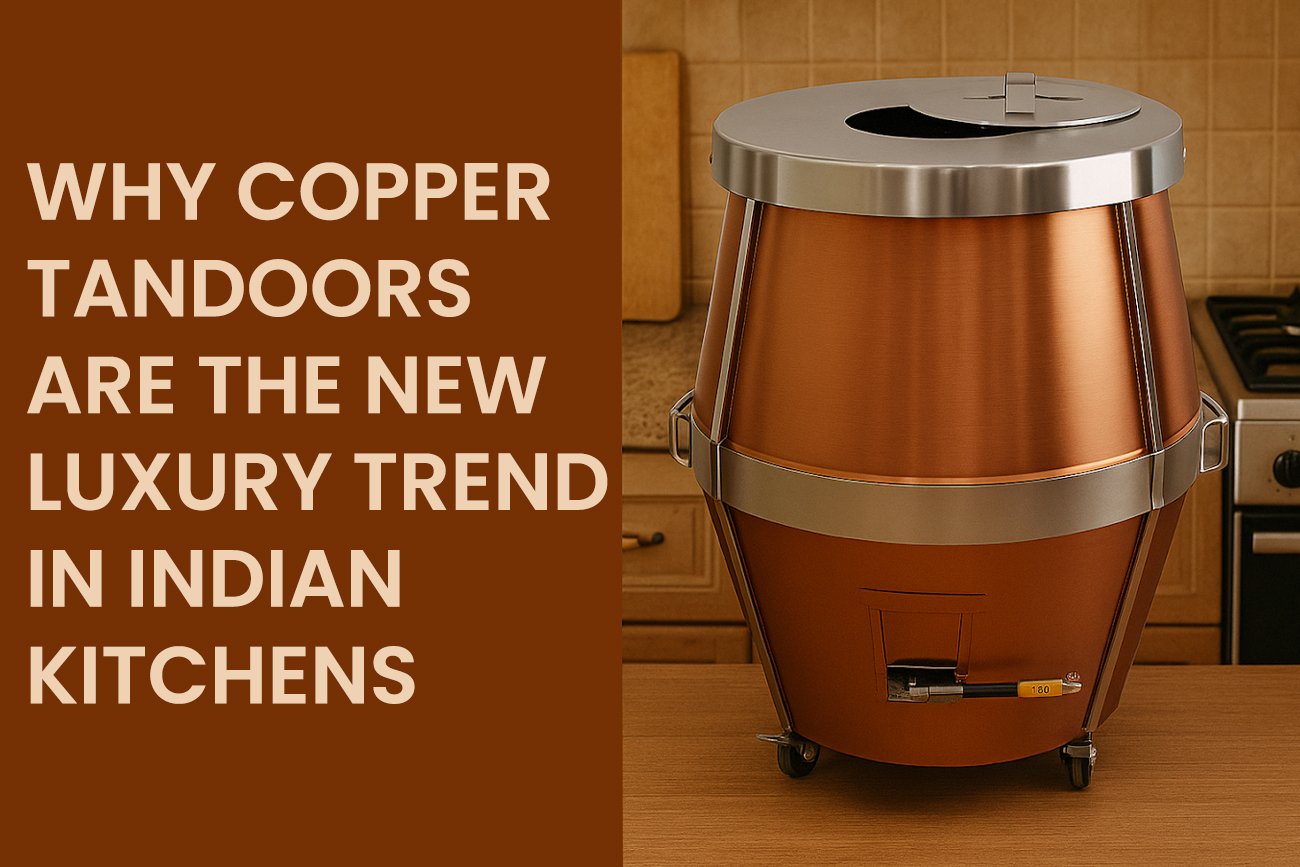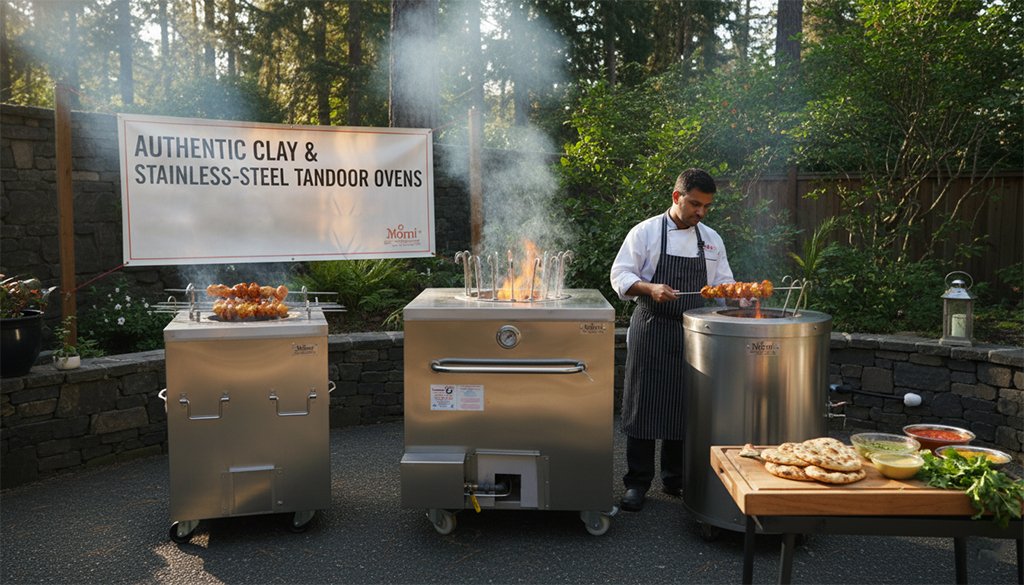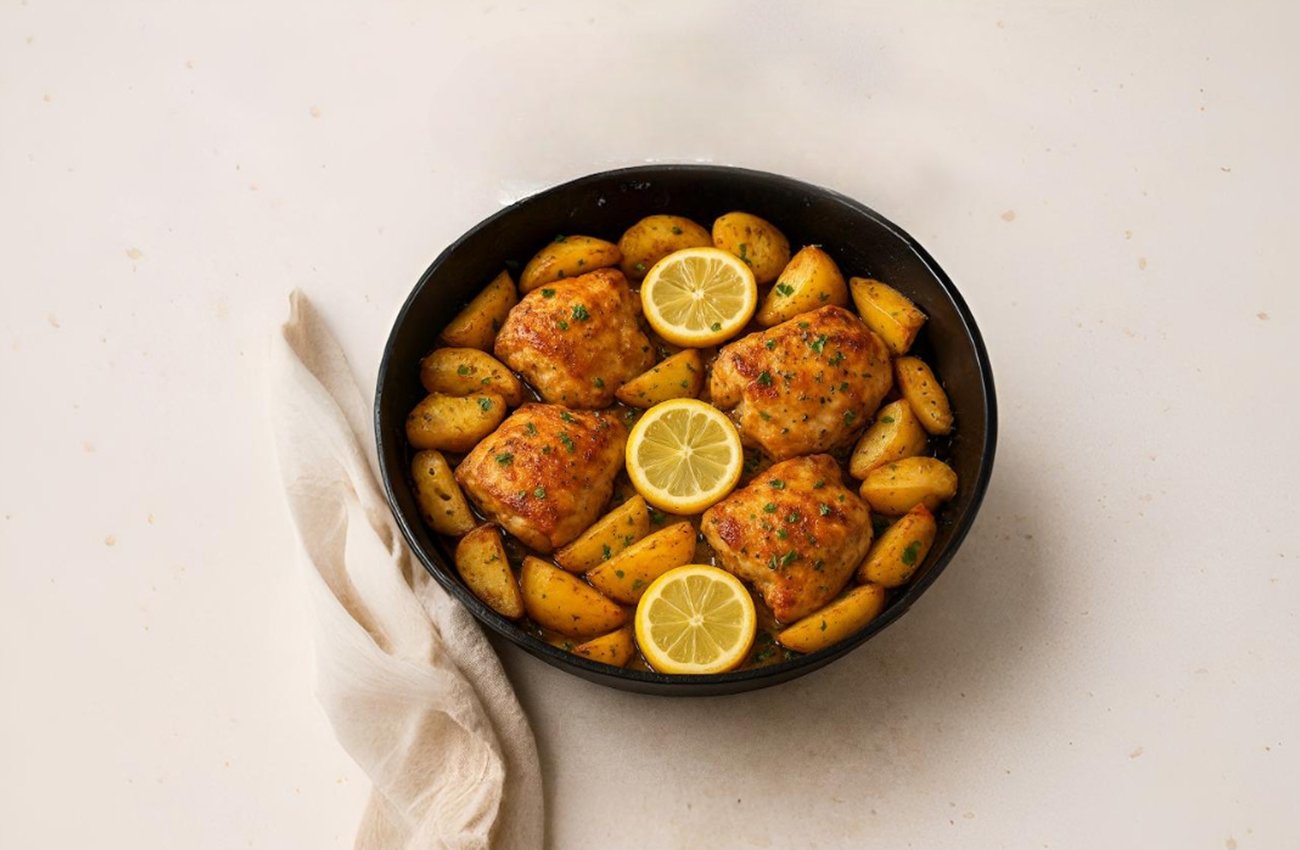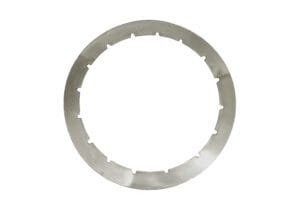
The Complete Guide to Stainless Steel Tandoor Skewers
When it comes to tandoori cooking, people often overlook one of the most important tools: the skewers. For those who use a tandoor oven, the skewers is not just an accessory—it’s an essential part of the cooking experience. Without it, dishes like kebabs, tikka, and grilled vegetables wouldn’t be possible. The right skewers make all the difference, ensuring that the food cooks evenly, stays on the skewer, and develops that irresistible charred flavor.
If you want to master tandoori cooking, understanding skewers is key. From the materials to the shapes and sizes, every aspect matters. This guide will walk you through everything you need to know about stainless steel tandoor skewers and how they can elevate your cooking experience.
The History of Skewers in Tandoori Cooking
The use of skewers goes back thousands of years, even though we don’t have a lot of written records. In ancient India, people used tandoor ovens to cook their meals, and archaeologists have found old remnants of these ovens dating back hundreds of years. As tandoori cooking evolved, so did the tools, including skewers, which have gone through several transformations over the centuries.
Early Skewers: Twigs and Sticks
In the earliest days, skewers were just twigs or sticks cut from specific types of trees. People chose these sticks because their natural moisture helped prevent them from burning quickly in the high heat of the tandoor oven. These makeshift skewers were rough, which helped hold the food, whether it was meat, fish, or vegetables, in place. Because cooking in a tandoor oven is quick, the food would usually be ready before the stick dried out and burned.
The Arrival of Iron Skewers
The Iron Age brought big changes to cooking. In India, the development of iron tools led to the introduction of iron skewers for grilling. These skewers were much stronger than wooden sticks, allowing people to cook larger and heavier cuts of meat without worrying about the skewer breaking or burning.
The Rise of Metal Skewers
Over time, people began using metal skewers made from materials like mild steel. These became widely popular because they were affordable and easy to produce. Today, you’ll find mild steel skewers in markets all over the world, but their popularity is waning as more people are switching to stainless steel tandoor skewers.
The Modern Stainless Steel Tandoor Skewers
The most recent innovation in skewers is the use of stainless steel. It has quickly become the go-to choice for many professional chefs, restaurants, and home cooks. Stainless steel tandoor skewers are easy to maintain, hygienic, and long-lasting. They don’t rust and are less likely to react with acidic foods, making them a safer option compared to other metals. Plus, they don’t absorb flavors, so your food tastes exactly how it’s supposed to.
Why Choose Stainless Steel Tandoor Skewers?
There are many reasons why stainless steel tandoor skewers are the best choice for grilling in a tandoor oven. Let’s look at some of the key benefits:
1. Durability and Strength
Stainless steel is known for its strength and durability. It can withstand the intense heat of a tandoor oven without warping or bending. This makes it ideal for cooking large or heavy pieces of meat, such as whole chickens or large kebabs. Unlike wooden or bamboo skewers, stainless steel skewers can be reused for years with proper care.
2. Hygienic and Easy to Clean
Stainless steel tandoor skewers are much easier to clean than other types of skewers. They don’t absorb food juices or flavors, making them more hygienic. You can wash them with soap and water, and they will be ready for the next use. For an even deeper clean, you can scrub them with a steel wool pad.
3. Rust-Resistant
Unlike iron or regular steel skewers, stainless steel tandoor skewers don’t rust. This makes them a safer choice for cooking, as rust can affect the taste of the food and pose health risks. With stainless steel, you don’t have to worry about corrosion, even if you use the skewers regularly.
4. Heat Resistance
Stainless steel can handle high temperatures without breaking down. This means that stainless steel tandoor skewers will last longer and maintain their shape even after repeated use in a hot tandoor oven.
5. Suitable for Different Types of Food
Whether you’re cooking meat, seafood, or vegetables, stainless steel tandoor skewers work well with all kinds of foods. They come in various shapes and sizes, so you can choose the right skewer for your specific dish.
Choosing the Right Stainless Steel Tandoor Skewer
When selecting stainless steel tandoor skewers, it’s important to consider factors like shape, size, weight, and tip design. Each of these elements plays a role in how the food cooks and how easily you can handle the skewer.
The Tip: Sharp or Blunt?
The tip of the skewer affects how easily you can pierce the food and how securely it stays on. While sharp tips make it easy to pierce meat and vegetables, they can also get damaged or bent over time, especially when used with tougher cuts of meat. Blunt tips may not pierce food as easily, but they are more durable and less likely to get damaged.
Pro Tip: If you frequently cook tougher meats, consider using skewers with a blunt tip. If you usually grill softer foods like paneer or vegetables, a sharper tip will work better.
Skewer Shape: Round, Square, or Flat?
The shape of the skewer affects how the food cooks and how well it stays on the skewer. Here’s a breakdown of the different shapes and their uses:
-
- Round Skewers: These are ideal for softer foods like paneer and vegetables. However, round skewers may not hold heavier meats as securely, as the food can sometimes rotate on the skewer.
-
- Square Skewers: These provide a better grip on the food, making them suitable for meat, kebabs, and other heavier foods. The square shape prevents the food from spinning, ensuring even cooking.
-
- Flat Skewers: These are great for large pieces of meat or fish. The flat surface holds the food firmly, preventing it from rotating.
Skewer Thickness: Thin or Thick?
The thickness of the skewer matters when it comes to how the heat travels through the food. Thinner skewers heat up quickly and are suitable for small items like mushrooms or shrimp. Thicker skewers take longer to heat but retain the heat longer, making them ideal for larger cuts of meat.
Consider these options:
-
- Thin Skewers (3mm – 5mm): Ideal for small items like shrimp, mushrooms, or paneer.
-
- Medium Skewers (6mm – 8mm): Suitable for chicken, lamb, and beef kebabs.
-
- Thick Skewers (10mm or more): Perfect for whole chickens or large meat cuts.
How to Use Stainless Steel Tandoor Skewers for Best Results
To get the best out of your stainless steel tandoor skewers, follow these simple steps to ensure even cooking and safety.
1. Preheat Your Skewers
Before using the skewers, place them in the hot tandoor oven for a few minutes. This will help kill any bacteria and make the metal hot, which allows the food to cook more evenly.
2. Don’t Overload the Skewer
Avoid putting too much food on a single skewer. Leave some space between each piece of food. This will help the heat circulate around the food, ensuring it cooks evenly on all sides.
3. Use the Right Shape for the Right Food
Choose the shape of the skewer based on the food you are cooking. For instance, use flat skewers for large meat pieces to prevent spinning, and round skewers for vegetables.
4. Rotate the Skewers Regularly
To make sure the food cooks evenly, turn the skewers frequently. This helps all sides get that delicious charred flavor without burning.
5. Rest the Food Before Serving
After removing the skewers from the tandoor oven, let the food rest for a few minutes. This allows the juices to redistribute, making the dish more flavorful.
Maintaining Your Stainless Steel Tandoor Skewers
Proper maintenance will extend the life of your stainless steel tandoor skewers. Here’s how you can keep them in top shape:
Clean After Every Use
Always clean the skewers after using them. Wash them with soap and warm water to remove any food residue. Use a brush to scrub off any stuck-on bits.
Dry Thoroughly
Make sure the skewers are completely dry before storing them. Even though stainless steel is rust-resistant, keeping the skewers dry will prevent any moisture-related issues.
Store Properly
Store the skewers in a dry place. You can hang them on a skewer rack or keep them in a storage case. This prevents them from getting scratched or damaged.
Avoid Using Harsh Chemicals
When cleaning the skewers, stick to mild dish soap. Harsh chemicals can damage the stainless steel over time.
The Different Uses of Stainless Steel Tandoor Skewers
Stainless steel tandoor skewers are versatile tools that can be used for a wide range of dishes. Let’s explore the different ways you can use them.
1. Meat and Seafood
Skewers are perfect for grilling meat and seafood. The high heat of the tandoor oven sears the outside while locking in the juices, giving you a tender and flavorful dish. You can cook:
-
- Chicken tikka
-
- Lamb kebabs
-
- Fish skewers
-
- Shrimp skewers
2. Vegetarian Delights
Vegetarian options like paneer tikka, grilled mushrooms, or charred vegetables taste amazing when cooked on skewers. The smoky flavor from the tandoor oven enhances the natural taste of the ingredients.
3. Naan and Flatbreads
Did you know you can also use skewers to cook naan in a tandoor oven? Naan skewers are specially designed with a hook or paddle end to stick the dough to the oven’s walls.
Using Stainless Steel Tandoor Skewers at Home
You don’t have to be a professional chef to use stainless steel tandoor skewers. They are great for home use, especially if you enjoy barbecues or have a tandoor oven in your backyard. Here are some tips for home cooks:
1. Choose the Right Skewers
For home cooking, medium-sized skewers (6mm-8mm thick) are ideal for grilling various foods. They offer versatility and can handle most items, from vegetables to meat.
2. Safety First
Always use oven gloves or a cloth to handle the skewers, as they will get very hot. Make sure to use long skewers to keep your hands safe from the heat.
3. Experiment with Marinades
Marinating your food adds flavor and keeps it moist. Try different marinades for meats and vegetables to find your favorite combinations.
Stainless Steel Tandoor Skewers for Restaurants and Catering
In commercial kitchens, stainless steel tandoor skewers are a must-have. They are durable, easy to clean, and can handle the high volume of cooking typical in restaurants. Here are some benefits:
1. Fast Cooking
The high heat of the tandoor oven allows chefs to cook large amounts of food quickly, making it ideal for busy restaurants.
2. Versatile Uses
Chefs can use the same set of skewers to cook different dishes throughout the day, from appetizers to main courses.
3. Professional Presentation
Stainless steel skewers offer a sleek and professional look, which is perfect for plating and presentation in upscale restaurants.
The Tandoor Morni Difference: Quality Stainless Steel Tandoor Skewers
Tandoor Morni offers high-quality stainless steel tandoor skewers that cater to both professional chefs and home cooks. Our skewers come in different shapes, sizes, and thicknesses to meet all your cooking needs. Whether you’re grilling chicken, making naan, or experimenting with vegetarian dishes, we have the perfect skewer for you.
The Bottom Line: Why Stainless Steel Tandoor Skewers Are Essential
Stainless steel tandoor skewers are more than just cooking tools; they are essential for achieving the authentic tandoori flavor. Their durability, ease of cleaning, and versatility make them the best choice for any kitchen, whether at home or in a restaurant. With proper care, they can last a lifetime, offering countless delicious meals.
Start experimenting with different types of skewers and dishes to bring the flavors of tandoori cooking into your home. Whether you’re preparing a feast for a special occasion or just a quick weeknight meal, stainless steel tandoor skewers will make your cooking experience easier and tastier.
Need Help? Order and Technical Support
Have questions or ready to place an order? Reach out to us via phone at +1(727) 251 6924 or email us at info@tandoormorni.com.
Need detailed instructions? Explore the Operation Manual for our CH & CS models to get started with your Tandoor oven today.
About Tandoor Morni
Tandoor Morni, in business since 1992, is a trusted name in premium Tandoori Clay Ovens, known for crafting high-quality traditional and commercial tandoors. With a commitment to excellence, Tandoor Morni offers a wide range of tandoors, including commercial, residential, catering, and copper models. Our tandoors are built with durable materials and designed for efficient heat distribution, ensuring authentic flavors and fast cooking. Each oven features customizable options like gas, wood fire, or charcoal compatibility, making them suitable for various cooking needs.
Common Queries – FAQ’S
Can I use a tandoor Indoors?
Yes, certain tandoor models are designed for residential use, including compact, home-friendly versions. However, using a tandoor indoors requires proper ventilation and adherence to safety precautions to manage high heat and potential smoke. Always consult the manufacturer’s guidelines to ensure safe indoor use. For best results, they are often used in well-ventilated spaces or outdoors.
Are Tandoor-Cooked Foods Healthy?
Yes, tandoor-cooked foods are often considered healthy because they typically require little to no oil. The high cooking temperatures allow the food to cook quickly, preserving nutrients while reducing the need for additional fats. Additionally, the vertical cooking method allows excess fats to drip away, resulting in leaner dishes.
What Types of Fuel Can Be Used in a Tandoor?
Tandoors can be heated using charcoal, wood, natural gas or propane. Charcoal and wood provide an authentic smoky flavor, while natural gas or propane is more convenient and easier to control. The choice of fuel often depends on the specific cooking requirements and local regulations, especially in commercial settings.
How Does a Tandoor Oven Differ from a Conventional Oven?
Unlike conventional ovens, which use electric or gas heat, a tandoor is made from clay and uses charcoal, wood, or gas to heat the walls. The cylindrical shape and porous clay walls create an environment where heat circulates evenly, cooking food quickly while adding a smoky flavor. Conventional ovens, in contrast, lack the intense heat and unique cooking technique of a tandoor.
How Much Maintenance Does a Gas Tandoor Require?
Gas Tandoor needs regular maintenance, though less than Charcoal Tandoor models. Here’s a breakdown:
- Daily Maintenance: Wipe down the inner chamber and clean the burner.
- Weekly Maintenance: Check the burner and gas line for any blockages or leaks.
- Monthly Maintenance: Deep clean the gas pipes, burners, and inner chamber.
- Quarterly Maintenance: Have a professional inspect the gas connections and burners.
- Annual Maintenance: Perform a full inspection and reapply clay lining if needed.
Avoid exposing the tandoor to excessive water, and gradually increase heat to prevent cracks.
How Can I Make a Payment for My Tandoor Order?
You can pay for your tandoor order through our website by placing an online order using the available payment options. If you prefer to place an order over the phone, we accept payment via Zelle for a quick and secure transaction.
Which Tandoor Oven Size Should I Choose?
- For Home Use: Consider the number of family members or guests you typically serve. A mini tandoor is ideal for smaller gatherings.( Suggested Product: R26 )
- For Restaurants: Measure the entrance to ensure the oven fits through the door. Select a size based on available space and cooking needs. (Suggested Product: CH02)
- For Naan Bread: Opt for an oven with a smaller mouth opening, resulting in a more egg-shaped clay pot, perfect for naan preparation. For larger meat portions, choose a bigger oven to maintain heat longer. (Suggested Product: CH04)
- For Catering: A Clay Tandoor Oven is suitable for catering due to its lightweight and easy transport features. (Suggested Product: CS01)
- For Banquet Halls: A larger oven with a spacious clay pot is ideal for preparing multiple dishes quickly during big events. (Suggested Product: CH06)
- For Open Kitchens or Outdoor Patios: Choose a model with a decorative finish, such as a copper tandoor, to enhance the kitchen’s appearance with a touch of elegance. (Visit Our Copper Tandoor).
What Should You Consider When Installing a Restaurant Clay Oven?
- When installing a tandoor in your restaurant kitchen, consider the following:
- Space and Placement: Ensure there is enough clearance around the tandoor for ventilation and safety, with fireproof or heat-resistant flooring.
- Ventilation and Exhaust: Proper ventilation is essential to handle heat and smoke, especially with charcoal tandoors.
- Safety Measures: Use heat-resistant barriers if the tandoor is near other equipment, and keep fire safety equipment like extinguishers handy.
- Fuel Supply: Decide between charcoal, which offers traditional flavors, and gas, which is easier to manage.
By keeping these points in mind, you can ensure a safe and efficient tandoor setup. If you're looking for a Restaurant Clay Oven for Sale, make sure to choose a model that fits your kitchen's requirements and meets all necessary safety standards.
- Menu Considerations: Larger tandoors or multiple units may be needed if you have a diverse menu or high demand during peak hours.
- Maintenance and Cleaning: Clean the tandoor daily and monitor for any wear or damage to the clay or gas parts.
- Compliance with Regulations: Ensure your installation meets local safety standards and health codes.
- Staff Training: Train staff in safe tandoor operation and fire safety protocols.


